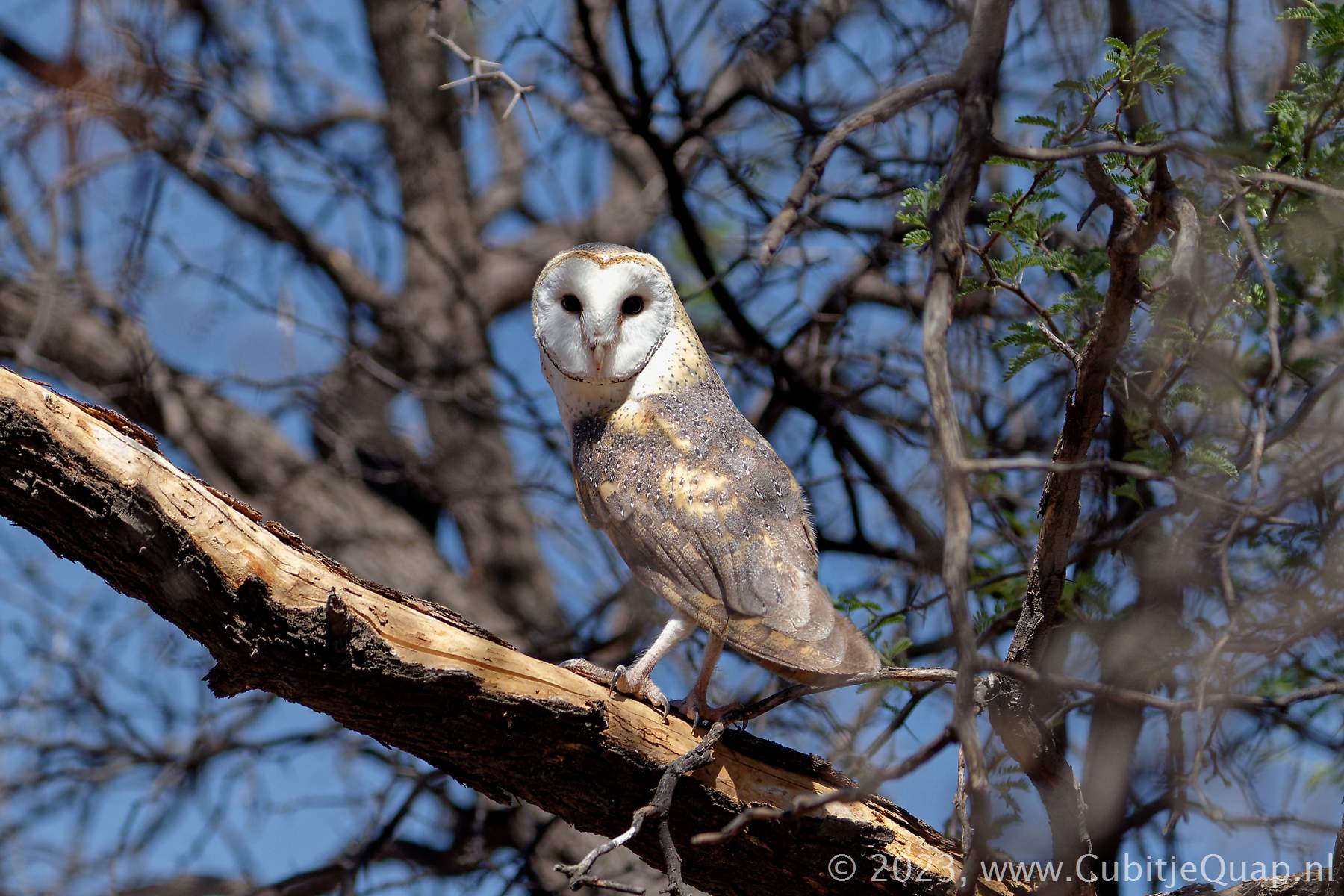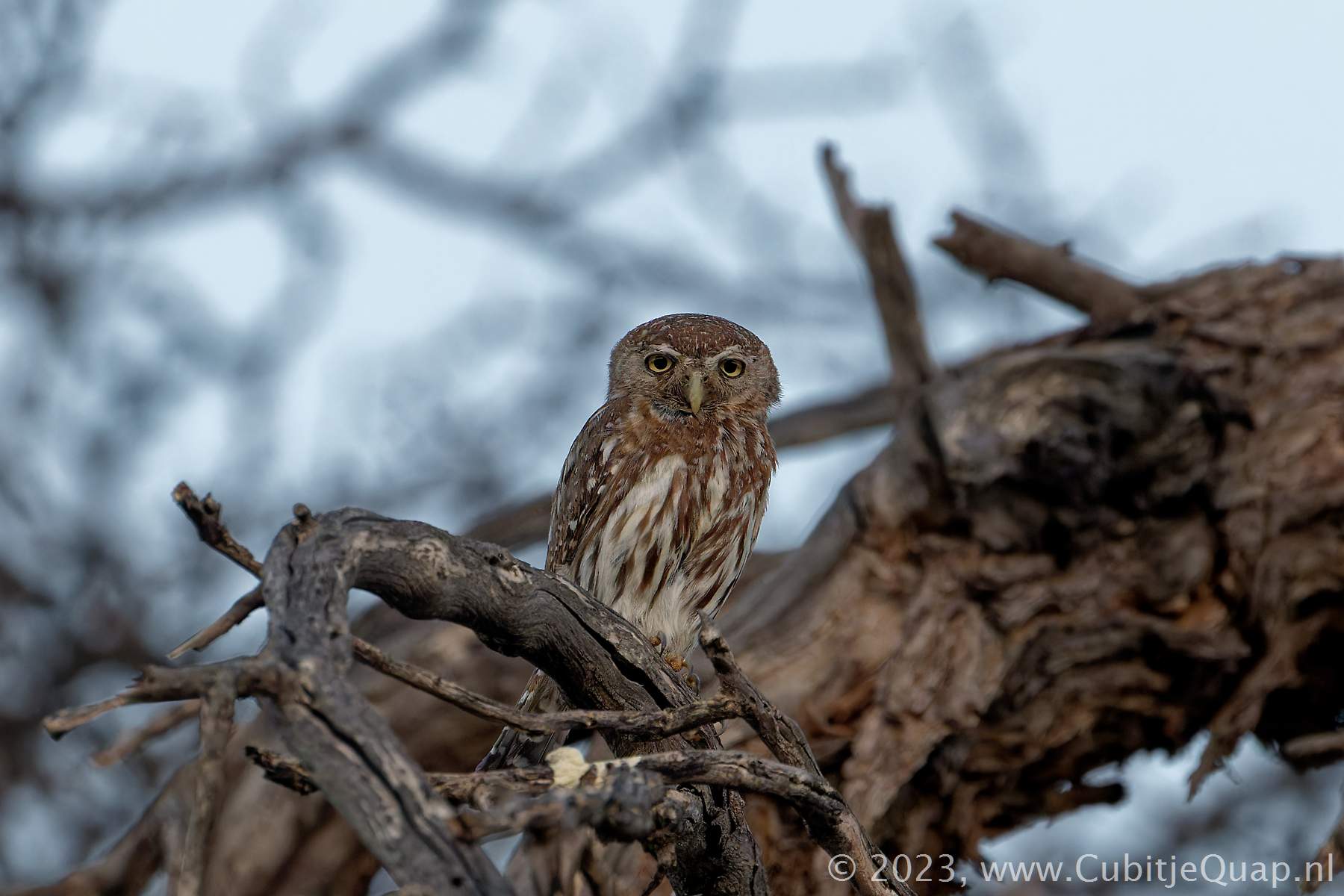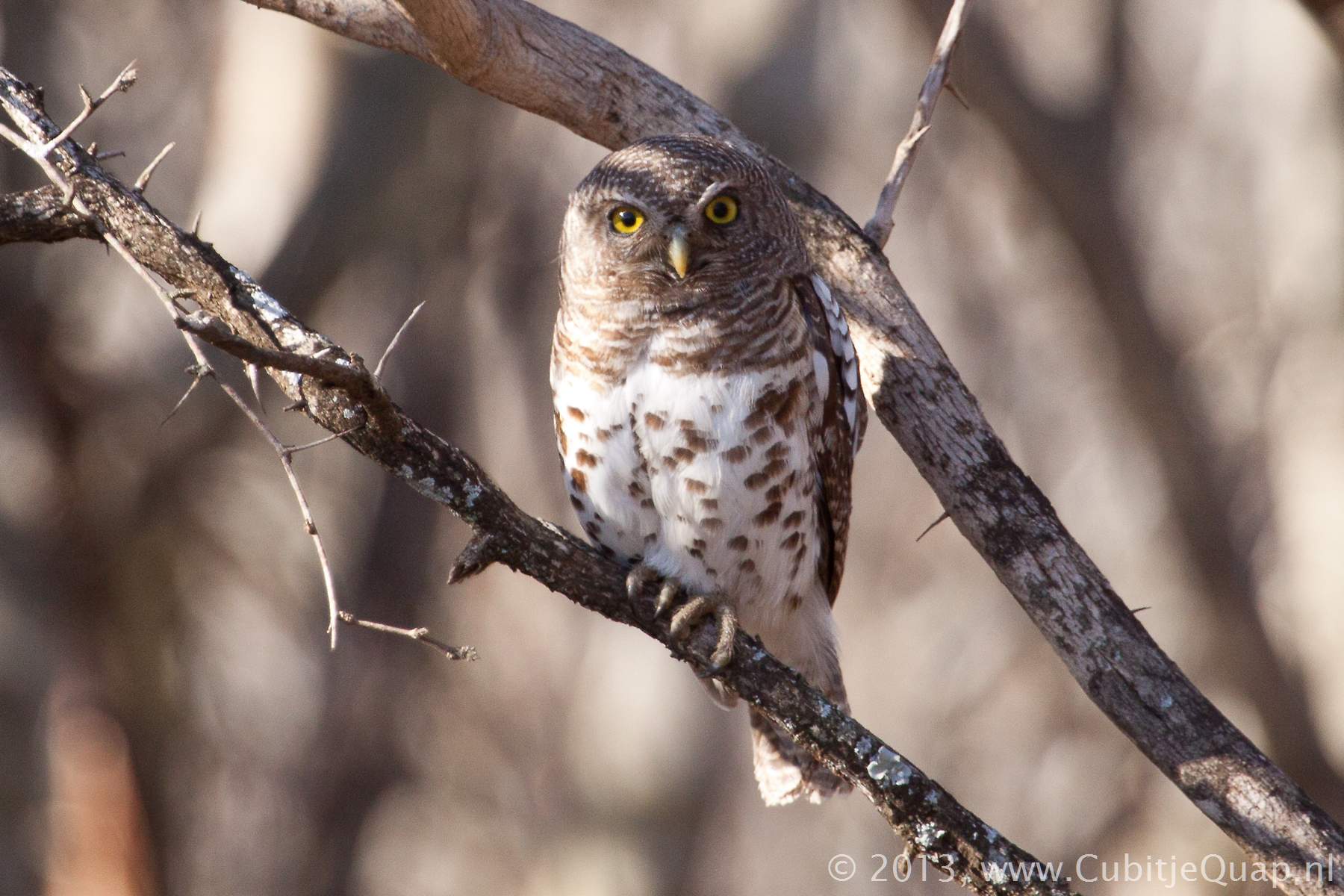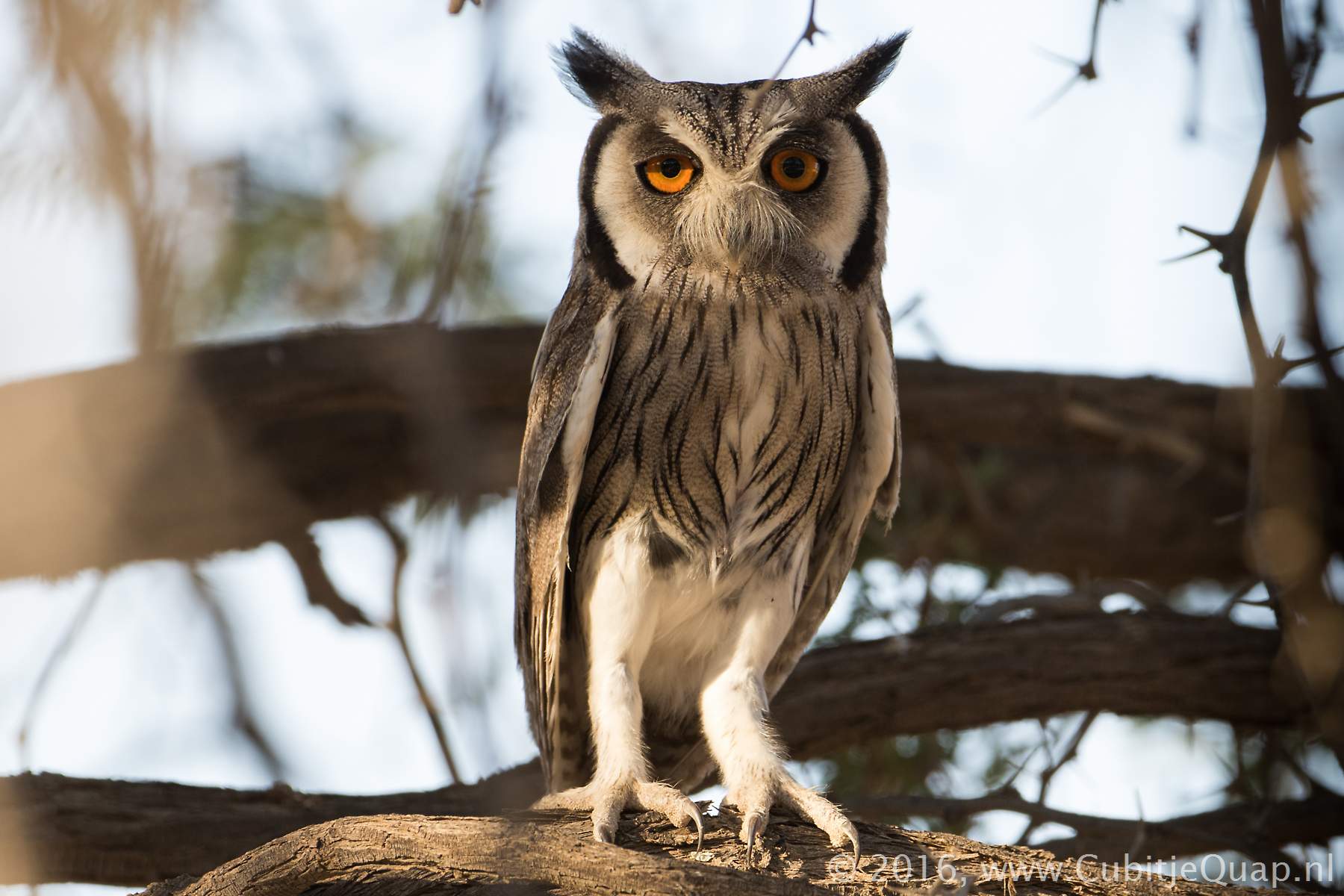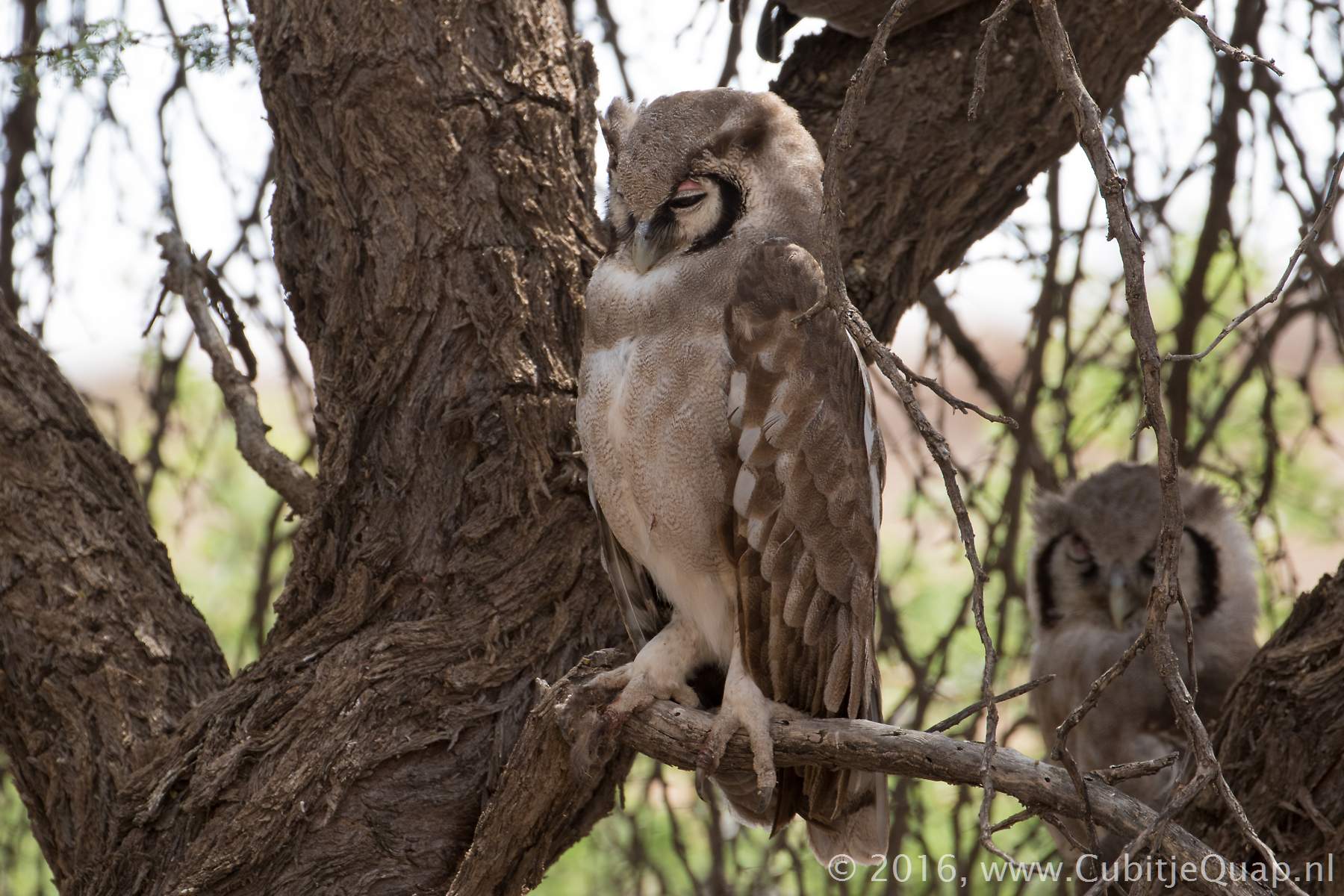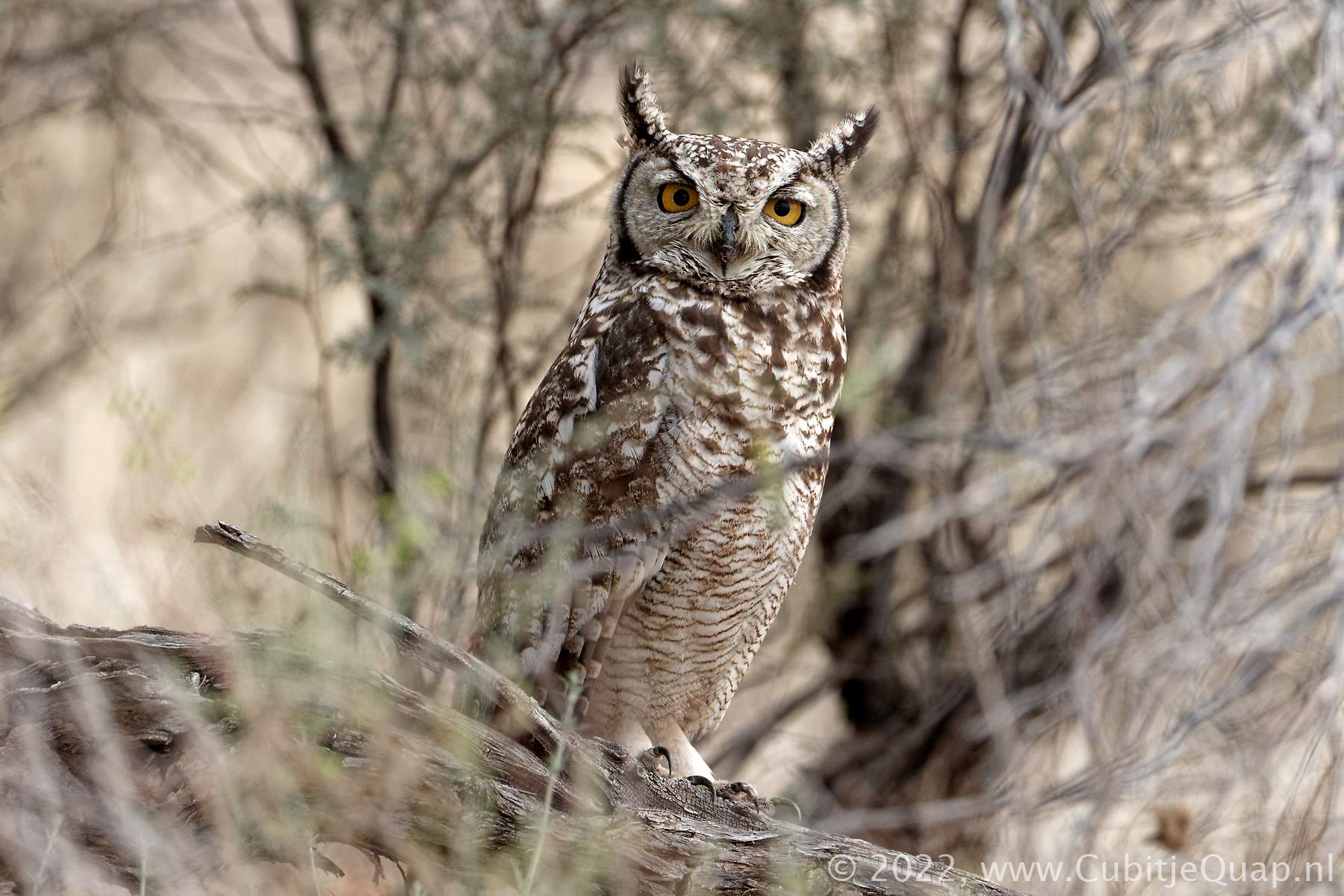Owls Information page
Description
Familiar, nocturnal round-headed or heart-shape headed predatory birds.All species regurgitate pellets of indigestible remains.
There are two types of owls: Typical owls or 'hooting' owls (Strigidae) and Tyto owls or 'screetching' owls (barn owls)
Scientific names
Tyto = an owl (distinguished from other owls by its heart-shaped facial disc), tuto is greek for 'night owl'Glaucidium = a very small owl, an owlet
Otus = horned, or eared owl
Ptilopsis = with downy feathers, from greek: feather-eye
Bubo = latin for eagle-owl
alba = from latin, white
perlatum = from latin: wearing peaks, refering to the conspicuous white spots on the upperparts
capense = from the cap (also refering to the southern part of africa)
senegalensis = from Senegal
granti = for captain Claude Grant
lacteus = milky, refering to the pale colour
africanus = Africa's typical eagle owl
Tyto owls (medium-sized owls)
These owls have a heart-shaped facial disc and no erectile 'ear tufts' on the head. Their flight is silent due to stiff comb-like outer fringe to primaries coupled with soft inner margins to flight feathers and downy surface to wings. They have a high-pitched call. The females are usually larger than the males.Thye are stricktly nocturnal. They generally hunt by flying and searching and then dropping onto prey.
They are monogamous, laying 4 - 6 white eggs. Incubation is done by the female, the young are fed by both sexes.
Typical owls
Round-headed predatory birds with soft, dense, cryptically-marked plumage. They cary in size from tiny owlets to bulky eagle and fishing owls. Many species have erectile ear-like feathers on the crown that are unconnecxted with hearing.They are called 'hooting' owls, although none truely hoot, thye make a variety of whistling calls or deep 'booming' sounds that can be heard for some distance. They have a circular-type facial disc, large colourful eyes, a forward-pointing bill and relatively short legs with full feathering on the lower leg.
Most of the larger species have long, broad wings, resulting in buoyant flight. Soft, down-like projections from the feather barbs on the flihgt feathers enable silent flight. This is important because they primarily hunt by hearing, not eyesight. They will hunt mostly from perches, but also on the wing.
They are monogamous and they do not construct a nest but lay a clutch of 2 - 3 white eggs in tree cavity, ledge, old hamerkop nest, crevice etc. Incubation is done by the female alone and the young are fed by both adults.
Small owls
Large owls
Interesting links
Wikipediafatbirder.com - owls
fatbirder.com - barn owls

